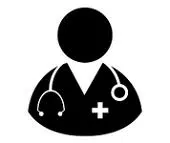 Diagnosis is the act and consequence of diagnosing : determining the nature or character of a disorder or problem from the observation and analysis of its signs or symptoms. Nursing , on the other hand, is the profession and occupation of the individual who is dedicated to the development of health tasks and the care of the wounded and sick.
Diagnosis is the act and consequence of diagnosing : determining the nature or character of a disorder or problem from the observation and analysis of its signs or symptoms. Nursing , on the other hand, is the profession and occupation of the individual who is dedicated to the development of health tasks and the care of the wounded and sick.
A nursing diagnosis , therefore, is a judgment that a nurse develops about a person's health status . This is an opinion made by the professional according to his experience and training.
It can be said that a nursing diagnosis refers to a specific or potential disorder that a nurse has the capacity and right to treat . These disorders can be prevented, reduced or resolved through the development of nursing actions .
For a health problem to constitute a nursing diagnosis, the problem in question must be repeated in a significant number of patients, it does not have to be related to a specific disease , and it must be able to be treated by a nurse.
The development of a nursing diagnosis requires, as a first stage, data collection . Then signals must be detected that allow establishing a hypothesis , which must be validated . Once the hypothesis is validated, the diagnosis is reached. This allows us to arrive at a clinical judgment regarding the experiences of individuals or groups in the face of vital processes or health problems: the nursing diagnosis provides support for the nurses' choice of interventions with the objective of achieving a certain result.
In this context, the North American Nursing Diagnosis Association (whose acronym in English is NANDA , which comes from North American Nursing Diagnosis Association ) is of great importance. It is a scientific society that is dedicated to standardizing all the information collected through the work of nurses in the diagnostic area.
NANDA was founded in 1982 and from its beginnings its representatives focused on the development and refinement of the criteria, taxonomy and nomenclature of nursing diagnoses. Between 2009 and 2011, axis 7 of one of its publications, which is titled "Diagnostic Status", presents a list of the types of diagnoses recognized so far, which are the following: real, health promotion , risk and health .
 Real nursing diagnoses are those that serve to describe the responses of human beings to the health states they experience. If nothing else is specified, then every diagnosis belongs to this group. One of the most common examples is "nausea." Within it we can include four diagnostic categories, which are: label, definition, defining characteristics and related factors.
Real nursing diagnoses are those that serve to describe the responses of human beings to the health states they experience. If nothing else is specified, then every diagnosis belongs to this group. One of the most common examples is "nausea." Within it we can include four diagnostic categories, which are: label, definition, defining characteristics and related factors.
Health promotion is the behavior that motivates the desire to generate an increase and actualization of human potential in the field of health. The first part of any label corresponding to this type of nursing diagnosis should begin with the words "readiness to improve," and include the first three diagnostic categories of the previous one.
When the description of the nursing diagnosis focuses on the possibility of a health problem developing, or on the patient's vulnerability to it, then we speak of a risk diagnosis . The categories, in this case, are: label, definition and risk factors.
The last type of nursing diagnosis is health , which can be understood as the state or quality of "being healthy." Its categories are: label, definition, defining characteristics and related factors.
